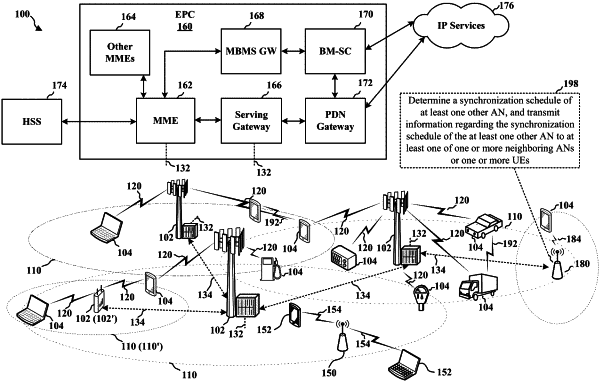| CPC H04W 56/0015 (2013.01) [H04L 5/005 (2013.01); H04L 5/0053 (2013.01); H04W 56/001 (2013.01); H04W 92/02 (2013.01)] | 36 Claims |

|
1. A method of wireless communication of a first access node (AN), comprising:
determining a synchronization schedule of at least one second AN based on received synchronization information regarding the synchronization schedule of the at least one second AN, the synchronization schedule of the at least one second AN indicating a pattern of synchronization operations associated with a first set of synchronization signal (SS) burst sets and a second set of SS burst sets, the first set of SS burst sets associated with facilitating synchronization with one or more user equipment (UEs) and the second set of SS burst sets associated with facilitating synchronization with one or more neighboring ANs,
wherein the first set of SS burst sets is associated with a first transmission configuration including at least one of a first set of beams, first constituent signals, and a first bandwidth allocation, and
the second set of SS burst sets is associated with a second transmission configuration including at least one of a second set of beams, second constituent signals, and a second bandwidth allocation,
the second transmission configuration being different from the first transmission configuration based on at least one of
the second set of beams comprising different beams than the first set of beams,
the second constituent signals comprising different signals than the first constituent signals, and
the second bandwidth allocation comprising a wider bandwidth allocation than the first bandwidth allocation; and
transmitting the synchronization information regarding the synchronization schedule of the at least one second AN to at least one of the one or more neighboring ANs or the one or more UEs.
|